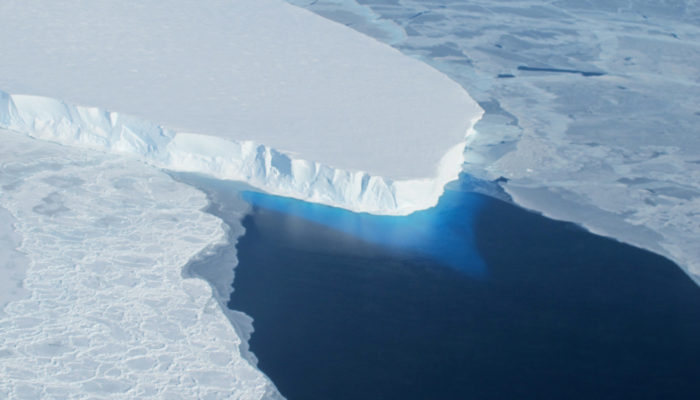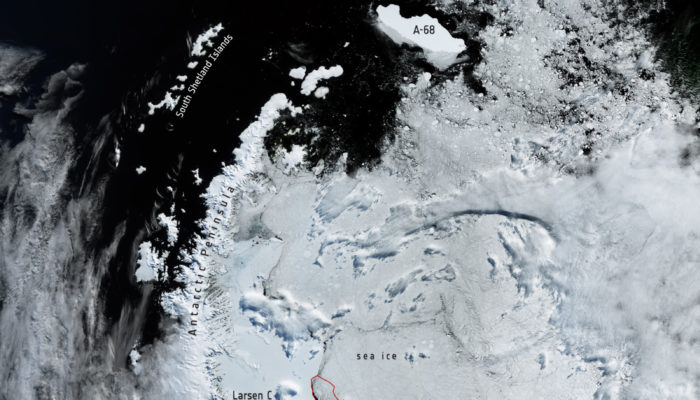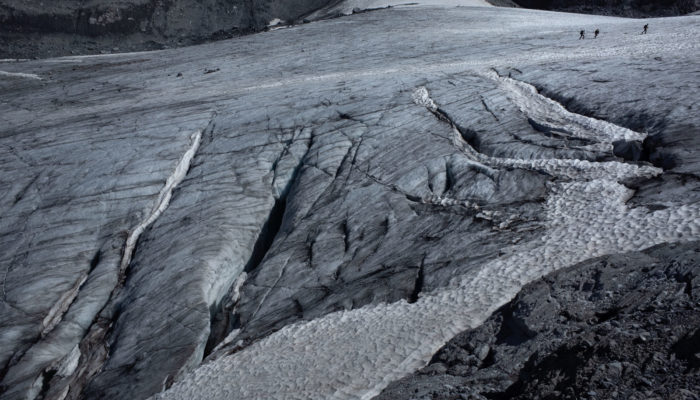There is no doubt that the Arctic is currently losing its sea ice as our climate is warming. And this process will carry on as temperatures continue climbing. But the rate at which sea ice will melt in the future and the exact date when the Arctic will be free of sea ice is not known due to several factors (which will be briefly discussed in this post). Torben Koenigk and I have selected climate m ...[Read More]
If you didn't find what you was looking for try searching again.
Cryospheric Sciences
Image of the week – The hidden ice of mountainous regions
When speaking about glaciers and the ice they contain, we generally picture large, clean, and therefore relatively white mountain glaciers… But did you know about rock glaciers? From our Image of the Week, you might notice that they do not quite look like the classic ice glacier you might have had in mind. Indeed, they actually indicate the presence of mountain permafrost, an often poorly understo ...[Read More]
Cryospheric Sciences
Questions from space: what is snow and what is ice on the Greenland ice sheet?
We usually think of a glacier as a white, clean surface. Well, this is only an idealized vision because in reality glaciers are far from immaculate, they can be colored! And this is extremely important since colored (dirty) ice absorbs more solar radiation than clean ice, accelerating melt. One of the places on Earth where it is fundamental to understand these processes is Greenland, where ice is ...[Read More]
Cryospheric Sciences
The “Cliffs Notes” on Ice-Cliff Failure
The retreat of large glaciers that drain the Greenland and Antarctic ice sheets could expose immense ice-cliffs at newly-bared calving faces, which are the exposed ends of glaciers where, in these cases, glacier ice meets the ocean. Past a certain height, these ice cliffs will become susceptible to collapsing from high stresses, a process known as structural ice-cliff failure. If a taller ice clif ...[Read More]
Cryospheric Sciences
On snowmelt, water security, and a warming climate – Why solution-oriented research matters, now more than ever
1 April 2015: for the first time on record, the chief of the California Cooperative Snow Surveys, Frank Gehrke, had no snow to measure at the Phillips Snow Course near Lake Tahoe at the end of the winter. This was in some ways unsurprising, as California had been in a drought since 2012. But drought was nothing new in the state, and this was the first time on record that snow was completely absent ...[Read More]
Cryospheric Sciences
Image of the Week – Icebergs increase heat flux to glacier
Icebergs are ubiquitous in Greenland’s fjords, melting and releasing freshwater as they float towards the open ocean. The amount of freshwater released from these icebergs can be vast – the equivalent of around 50,000 Olympic swimming pools per day in some fjords. New research reveals that this freshwater causes fjord currents to speed-up, which can actually increase the amount of heat delivered t ...[Read More]
Cryospheric Sciences
How do the ups and downs of the solid Earth influence the future of the West Antarctic ice sheet?
When the Antarctic ice sheet loses mass, the pressure it exerts on the underlying solid Earth decreases. As the ice sheet becomes less heavy, the Earth’s surface is not pressed down as much as before and therefore slowly rises up. In some regions, this rebound process is much faster than previously thought and could stabilise areas of unstable ice retreat. How come? Keep reading to figure it out… ...[Read More]
Cryospheric Sciences
Lost in transl[ice]tion…
Three years have passed since sea-ice scientists from both climate modeling and remote sensing backgrounds met for an international workshop in Hamburg. The goal was to discuss how to further improve our understanding of sea ice and reduce uncertainties in climate models and observations (see this previous post). One suggestion was to work on observation operators. Let’s see what has happened in t ...[Read More]
Cryospheric Sciences
Climate Change & Cryosphere – A brief history of A68, the world’s largest iceberg
In July 2017, the world’s largest iceberg known as A68 calved from the Larsen C Ice Shelf, located in the western Weddell Sea, Antarctica. Since then, A68 has lost two chunks of ice, A68-B and A68-C, but still remains a giant after more than 3 years. How did it feel to be the greatest, A68? Being the greatest With a length of 175 km and being about 50 km wide, this giant iceberg also appropriately ...[Read More]
Cryospheric Sciences
Image of the Week – What darkens snow and ice?
“Be thou as chaste as ice, as pure as snow”. Hamlet, Act 3 Scene 1 (W. Shakespeare) Snow and ice are not always as pristine as one may think. If you have ever walked on a glacier or on a snowfield during summer, you might have already noticed that. In fact, both snow and ice are often darkened by impurities. In this blog post, you will learn about the main processes leading to ice and snow darkeni ...[Read More]








![Lost in transl[ice]tion…](https://blogs.egu.eu/divisions/cr/files/2020/10/MainFigure-700x400.png)

